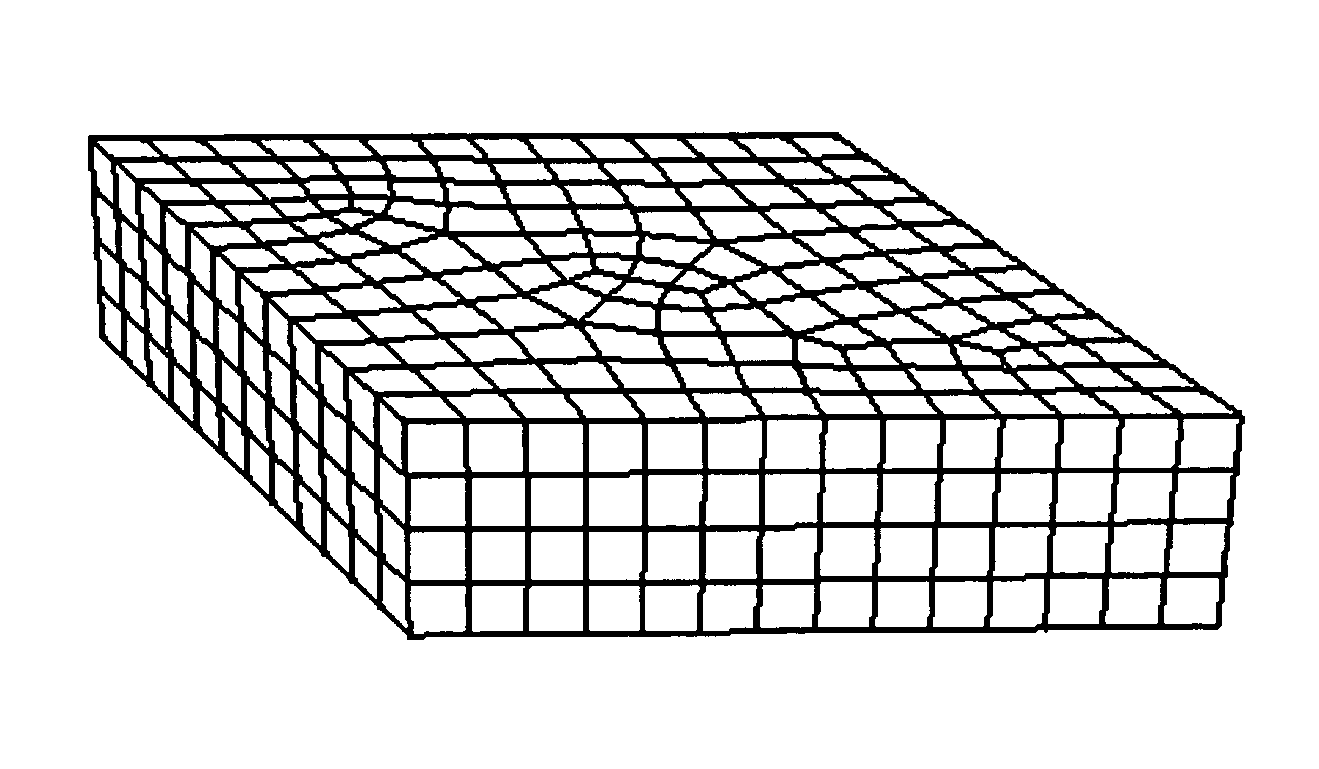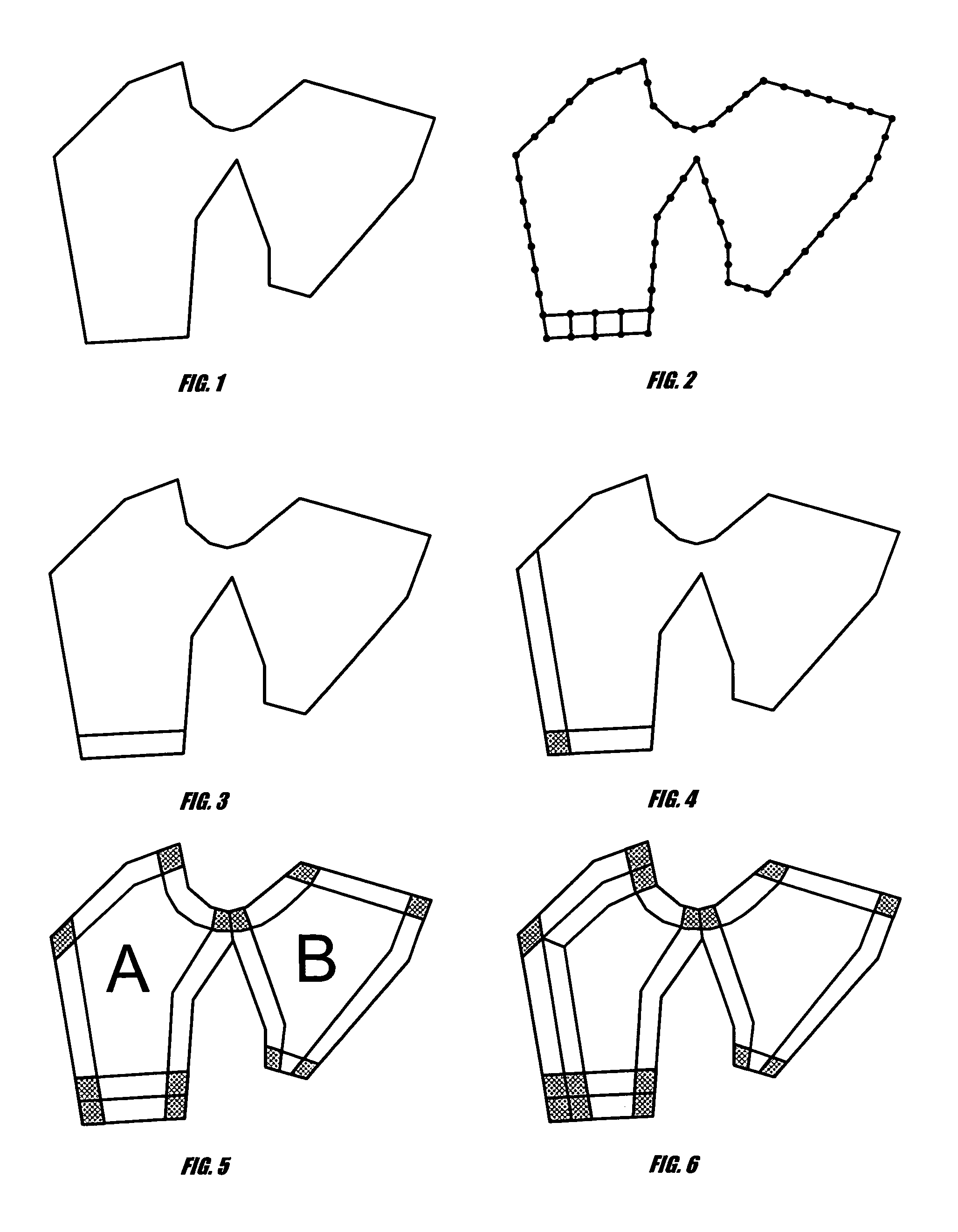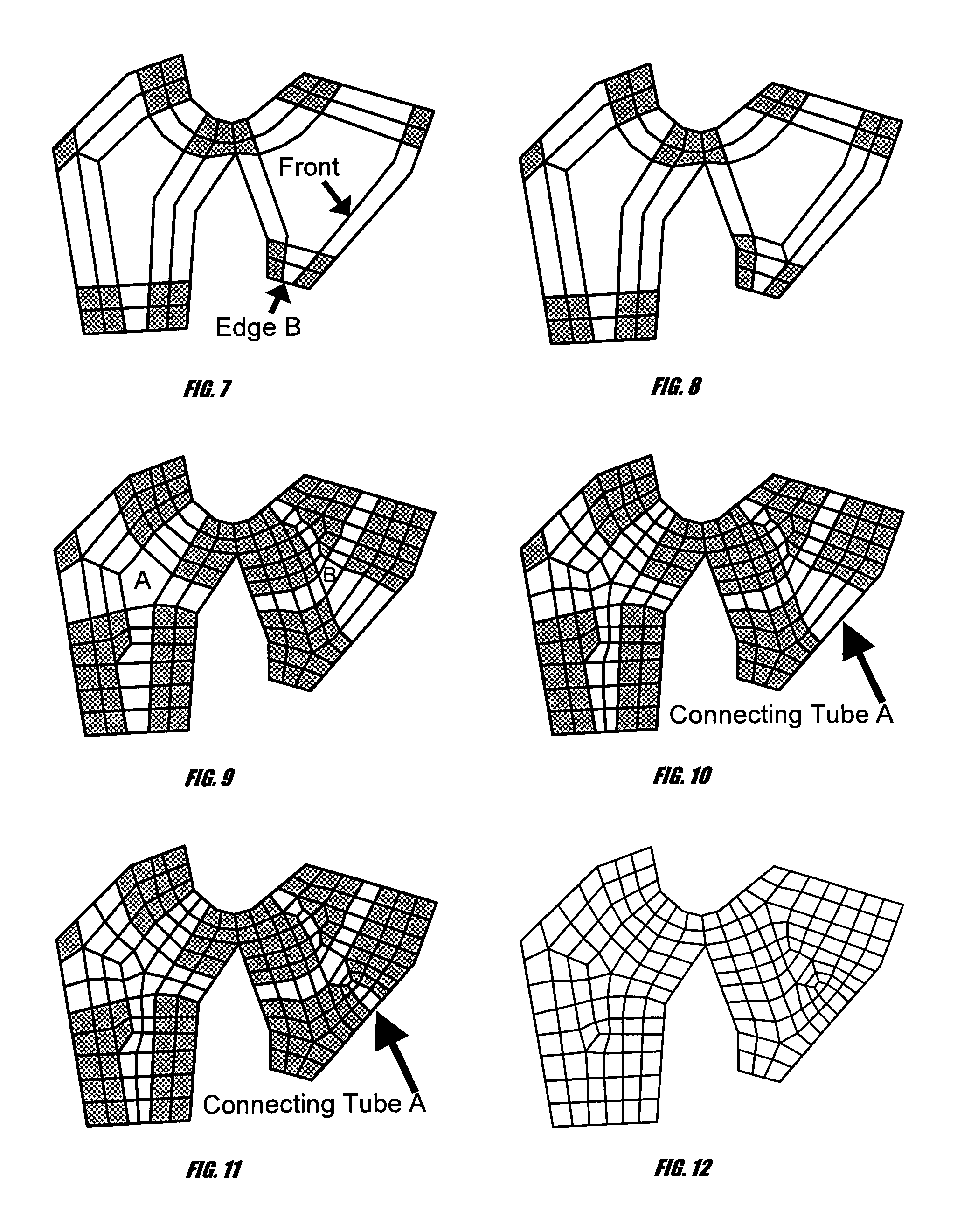Unconstrained paving and plastering method for generating finite element meshes
a mesh and meshing technology, applied in the field of allquadrilateral or allhexahedral meshes, can solve the problems of inability to achieve reliable general algorithms for hexahedral meshing, algorithm frequently has deficiencies, plastering is rarely able to solve unmeshed gaps
- Summary
- Abstract
- Description
- Claims
- Application Information
AI Technical Summary
Benefits of technology
Problems solved by technology
Method used
Image
Examples
Embodiment Construction
[0087]The present invention, referred to herein as “Unconstrained Plastering”, provides a method and software for generating a conformal all-quadrilateral or all-hexahedral mesh on any solid geometry assembly. Paving has proven reliable for quadrilateral meshing on arbitrary surfaces. However, the 3D corollary, Plastering, is unable to resolve the unmeshed center voids due to being over-constrained by a pre-existing boundary mesh. Unconstrained Plastering leverages the benefits of Paving and Plastering, without the over-constrained nature of Plastering. Unconstrained Plastering uses advancing fronts to inwardly project unconstrained hexahedral layers from an unmeshed boundary. Only when three layers cross, is a hex element formed. Resolving the final voids is easier since closely spaced, randomly oriented quadrilaterals do not over-constrain the problem.
[0088]To best understand the general concept behind Unconstrained Plastering, first examine the 2D corollary, Unconstrained Paving....
PUM
 Login to View More
Login to View More Abstract
Description
Claims
Application Information
 Login to View More
Login to View More - R&D
- Intellectual Property
- Life Sciences
- Materials
- Tech Scout
- Unparalleled Data Quality
- Higher Quality Content
- 60% Fewer Hallucinations
Browse by: Latest US Patents, China's latest patents, Technical Efficacy Thesaurus, Application Domain, Technology Topic, Popular Technical Reports.
© 2025 PatSnap. All rights reserved.Legal|Privacy policy|Modern Slavery Act Transparency Statement|Sitemap|About US| Contact US: help@patsnap.com



